PRESTO PLANS
Sent straight to your inbox
CLICK HERE TO ACCESS
Sign up to receive 10 ready-to-use ELA resources your students will love!
10 FREE ELA RESOURCES
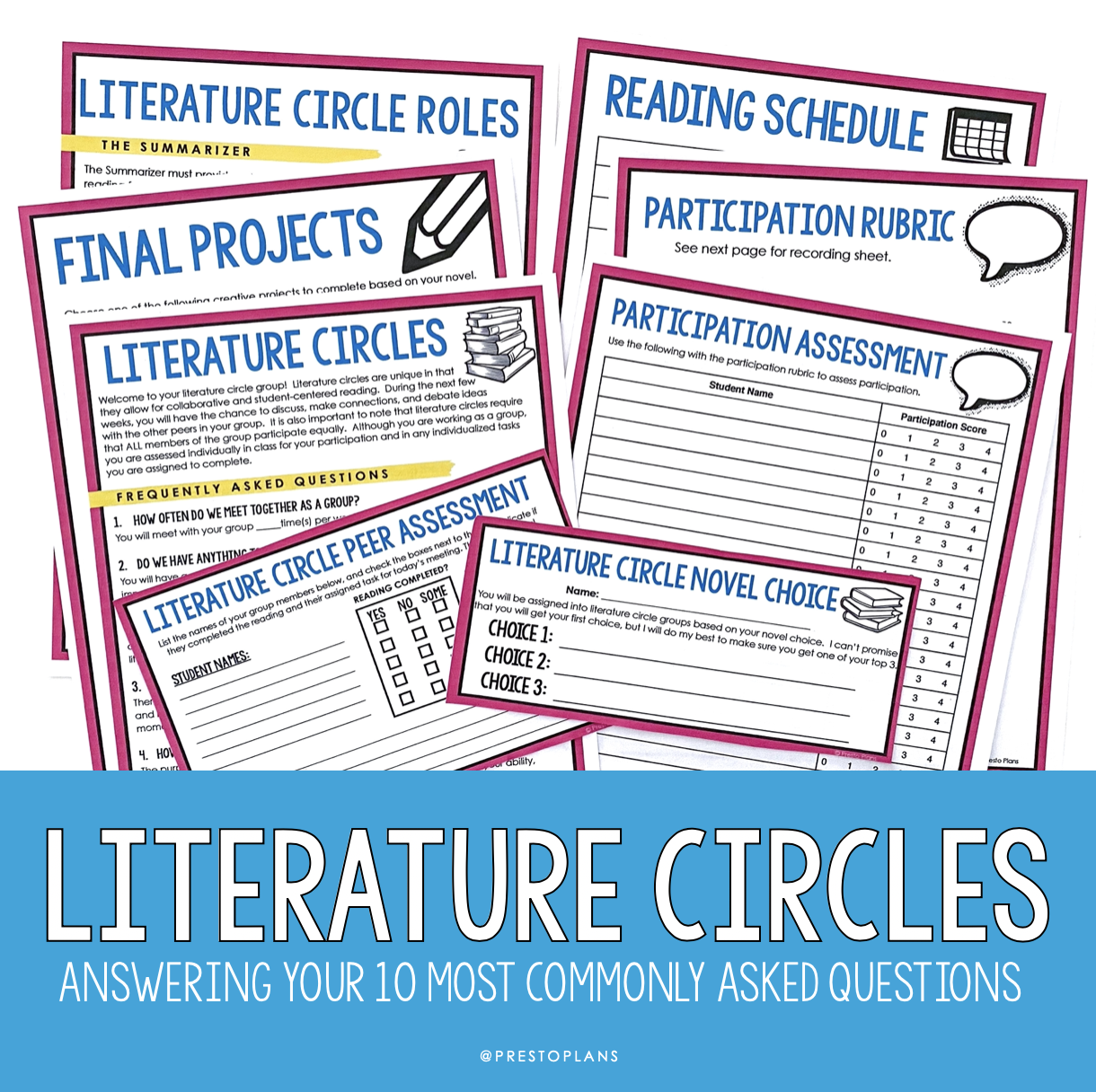
Literature Circles in Middle School ELA: Answering your 10 Most Commonly Asked Questions
Are you hesitant about using literature circles in your middle school ELA classroom? Literature circles (or book clubs) require you, as the teacher, to relinquish a certain amount of control by putting the onus on the students themselves. As a result, literature circles don’t always go off without a hitch. I often hear from teachers who see the value in book clubs, but who have questions about how to make the most out of them in the classroom. Here are the answers to your 10 most asked questions about using literature circles in middle school ELA.
You can grab a ready-to-use literature circles resource here.
1. At what point in the year should I do literature circles?
One of the central goals of using literature circles in ELA is to form a common connection with books at the core. Because connection is key to strong book clubs, I recommend not starting the year with them. Instead, I suggest waiting until you’re at least two months in so that you have a better understanding of the group dynamics of the class and can group students together accordingly. Waiting a couple of months also allows some time for students to develop foundational skills that will make the book clubs more successful. I actually like to do literature circles a couple of times a year—once during the first semester and once during the second semester.
2. How many times a week should students meet?
For literature circles, it’s important that students are meeting to discuss their books on a regular basis. The frequency of these meetings is completely up to you, though. I tend to like to get students to meet once a week; however, I do know that lots of teachers will have their students meet two or three times a week. It’s whatever works best for you. Personally, I find that having students meet once per week is ideal, as it gives them ample time to do the required reading. It allows me to assign more pages, which provides more substance for their discussions.
3. Should students get to choose their books?
Yes, absolutely! I believe that it’s crucial that your literature circles promote student choice in reading. With that said, there will be some limitations to this, of course. Book clubs are all about collaborative learning; these are not independent novel studies, after all. Accordingly, there might need to be some compromise here so that the choice of book works for each member of the group.
What I like to do is choose five or six books and then give a kind of book talk where I present each one to the class. I then get students to browse the books before submitting their top choices. Although it doesn’t always work out perfectly, I can usually give each student one of their top two choices. It’s important to present a variety of different types of books—not all students will want to read the same genre of novel.
4. How should I group my students?
When it comes to grouping your students, try to be flexible. For example, you might have one group with six students and another with just three, and that’s ok. It’s more important that students are reading what they want to read! However, I would encourage you to try and keep groups somewhere between that range (I happen to think five per group is ideal). Student interest is key to strong book clubs.
For similar reasons, I also allow students to be grouped with friends. I’ve found that literature circles work best when students are comfortable in their environment. No one wants to be in a book club with a group of people with whom they do not connect. You should factor in which students cooperate well together as well as reading levels. Don’t put your most reluctant readers with the most challenging book, for example.
5. What should I do before introducing book clubs to my students?
One of the most important elements of successful book clubs is setting specific expectations in advance. Students should know exactly what is expected of them before each meeting and they need to be held accountable to your expectations. I like to prepare literature circles binders for each group with everything they need for their literature circles to function smoothly. In mine, I like to include a FAQ page, all their assignment sheets, and the reading schedule. You can even get your students to do the reading schedule themselves as a first activity together as a group. They will just need to divide the book into the number of meetings they will have together.
6. What assignments should I have my students complete?
For my literature circles, I like to assign students roles with responsibilities and tasks to complete before each meeting. Some teachers don’t give any assignments at all for their book clubs, but if you want to use assignments in your literature circles, you might consider assigning students the roles below for each meeting. Students will rotate these assignments and have an opportunity to complete all of them at least once.
- This Summarizer summarizes the main events of the assigned reading for that meeting. They pull out key points or moments and track the action of the plot.
- The Discussion Leader develops strong questions for the group that are thought-provoking and elicit detailed and lengthy discussions.
- The Text Connector is responsible for making text-to-text, self, and world connections.
- The Vocabulary Leader finds and defines words that are particularly challenging
- The Literary Leader is responsible for choosing passives that enhance the author’s development of story elements like setting, plot, conflict, or characterization.
7. Do I need to read all the books?
This is a question I get a lot. Although it certainly helps if you’ve read all of the books that your students will be discussing in their literature circles, it’s ok if you haven’t. Don’t let this hold you back from doing literature circles in your middle school ELA classroom. They can still work just fine if you haven’t read all the texts. Reading the books yourself will make your life easier for these, but it’s definitely not a deal-breaker if you don’t get the chance!
8. What if students read ahead?
Don’t stress about students who read ahead. It’s ok if they do, but just ensure that they know there is a no-spoilers rule. In some ways, it’s great when students are engaged enough in their novels to continue reading beyond their required amount for that meeting. However, we all know what it’s like to have heard spoilers about something we’re reading (or watching). Try to protect your students from spoilers if possible!
9. How do I hold my students accountable?
One of the ways I hold students accountable is with assignments, which are graded. However, as mentioned above, you don’t necessarily have to give students assignments for literature circles to work. Another way to hold students accountable is getting everyone to do anonymous peer assessments.
For these, students list the names of everyone in their group (themselves included, so it remains anonymous). Next to each name, they will check off boxes that respond to questions about whether they did the reading and their assigned task. I also leave space for any additional comments. I also like to circulate to see who is participating and who isn’t. If I notice students slipping, I will pull them aside and talk to them.
10. What should I be doing during literature circles?
My answer to this question connects to my previous answer. For literature circles to be successful, it’s important that we, as the teachers, resist the urge to interfere too much with the meetings. During literature circles, try to simply observe and take notes of how it is going overall, and instead of jumping in and participating in each book club when you feel the need, try to take a step back and let students take the lead. If you’re having trouble with one particular student, you can pull them aside as mentioned; however, I encourage you to address any other issues to the whole class at once.
There you have it! I hope these answer your questions about using literature circles in your middle school ELA classroom. If you’re interested in the idea of giving students ownership over their own reading, you also won’t want to miss the comprehensive Empowered Readers course here which includes literature circle resources and much more!
Search the blog for what you are teaching
GIVEAWAYS
sent straight to your inbox!
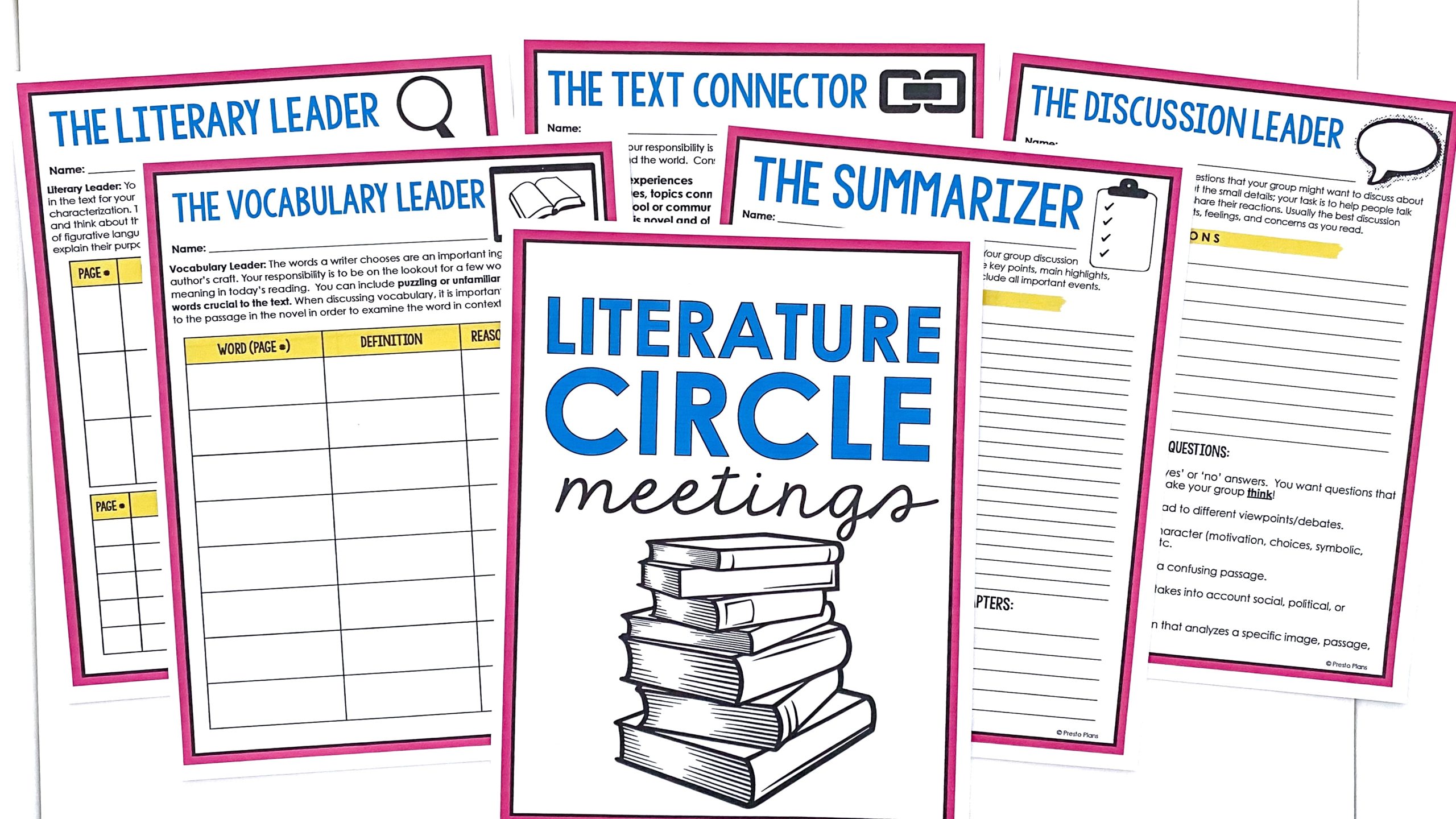
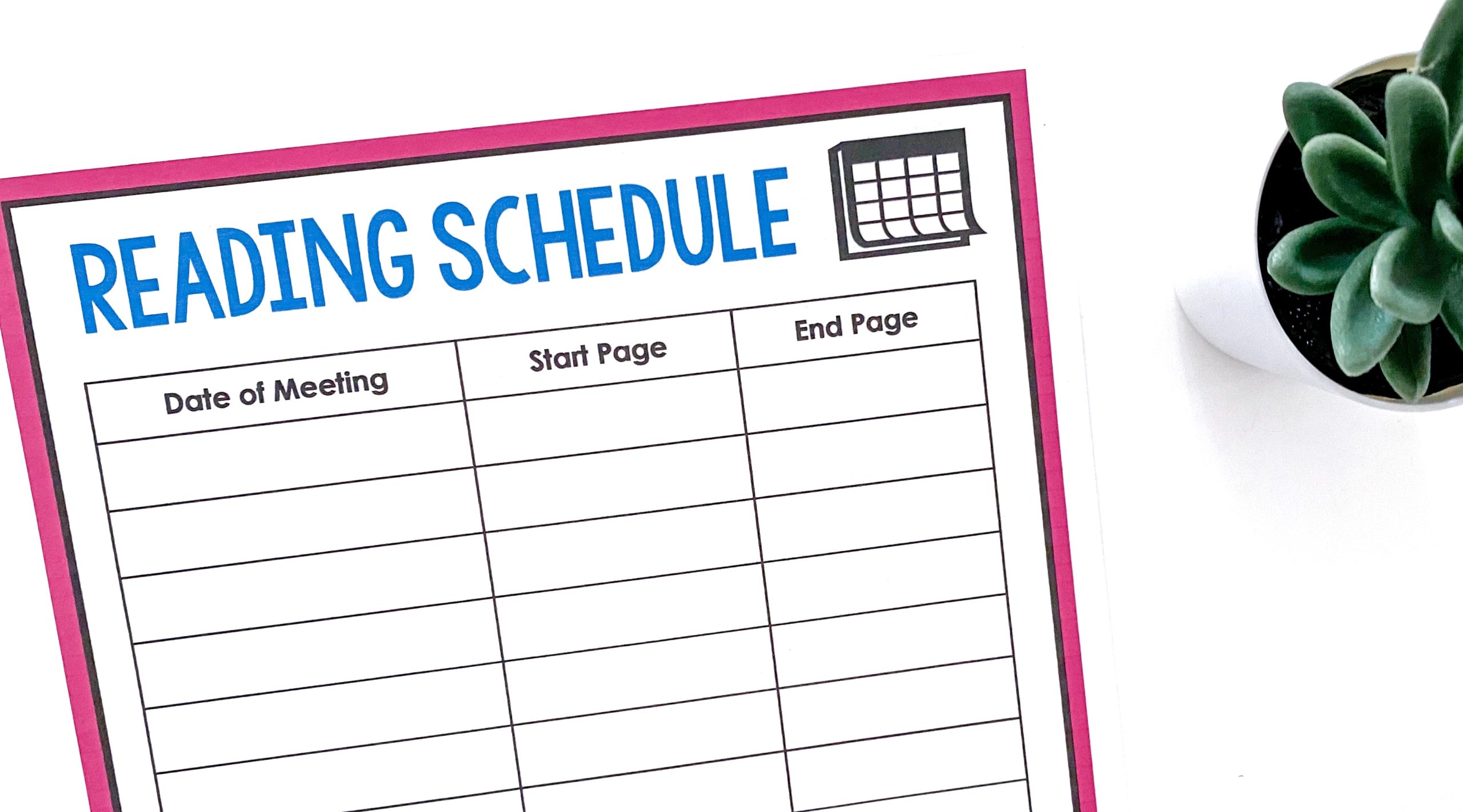
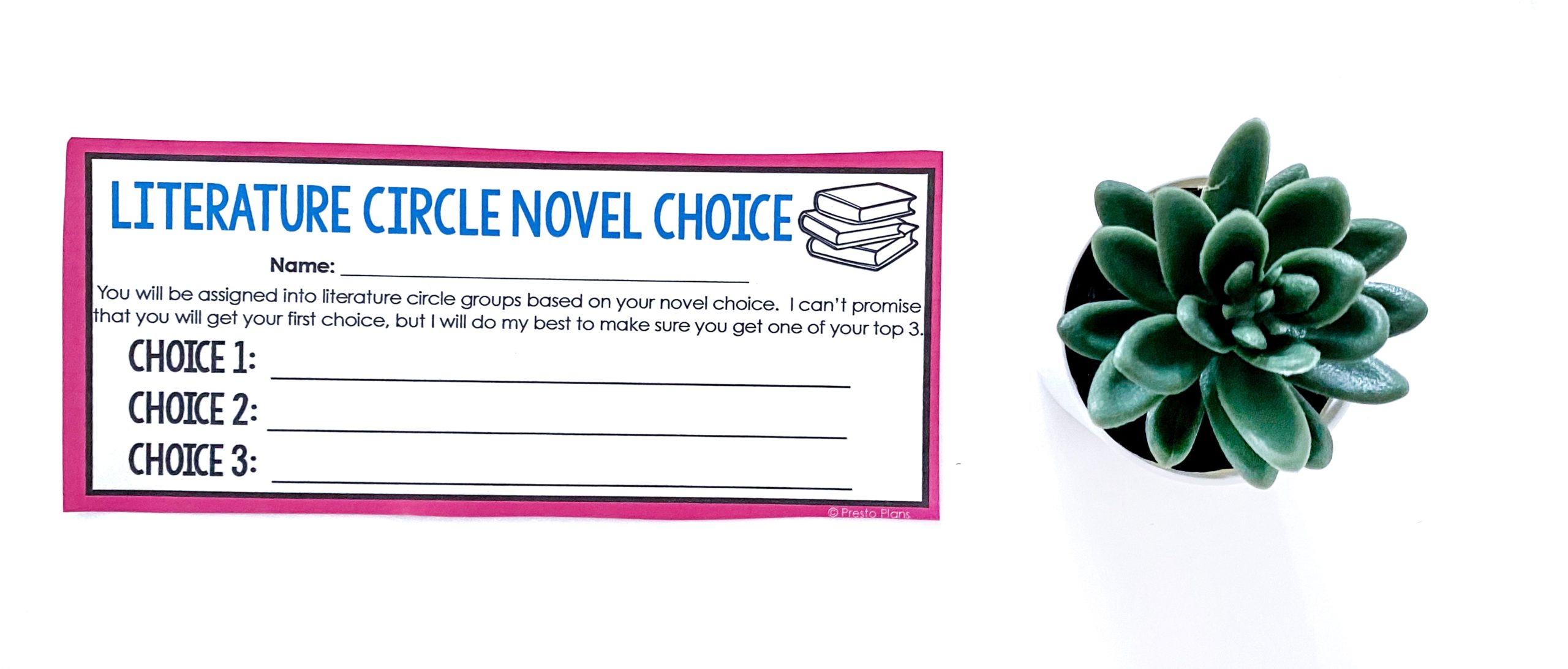
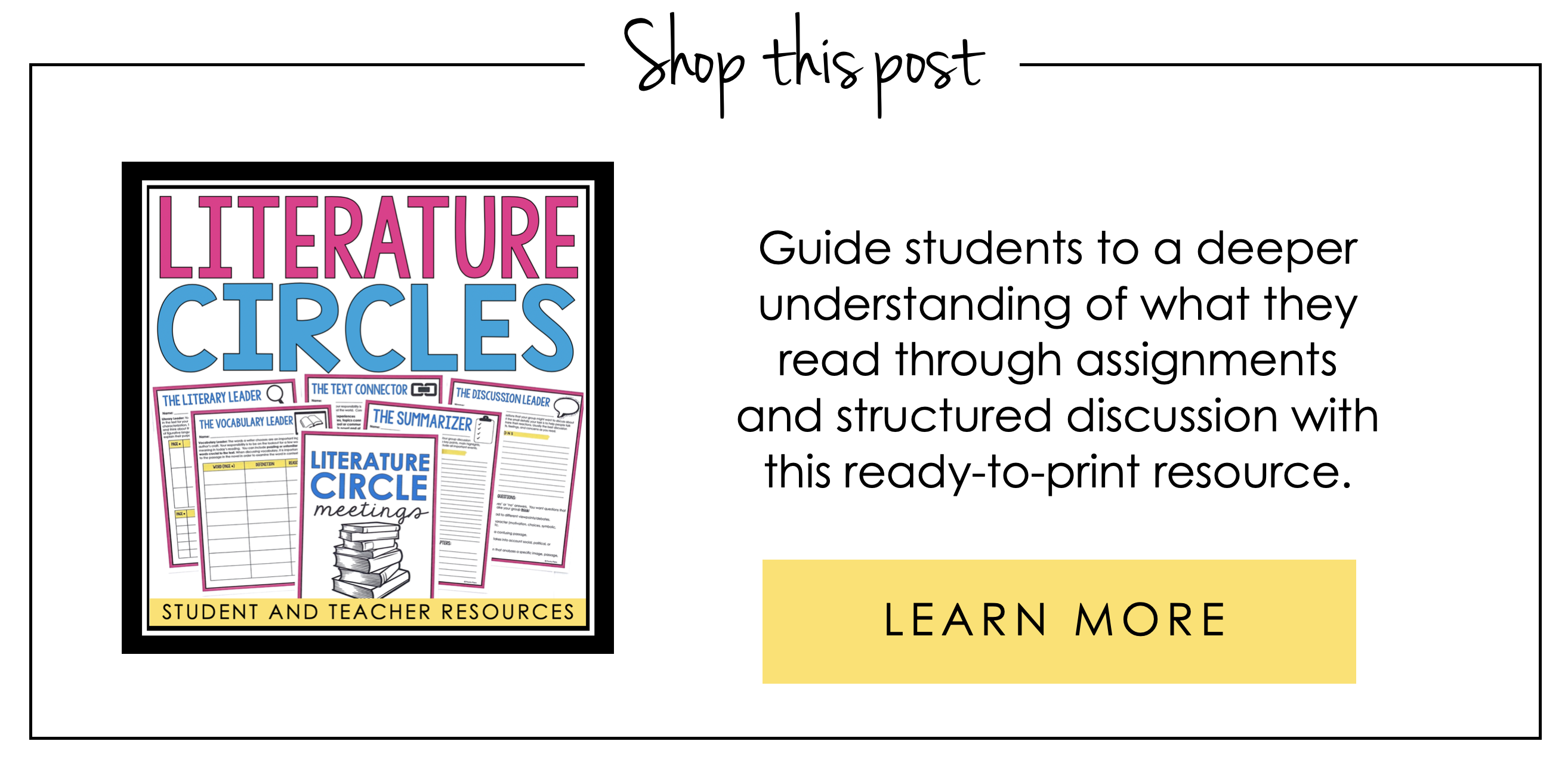
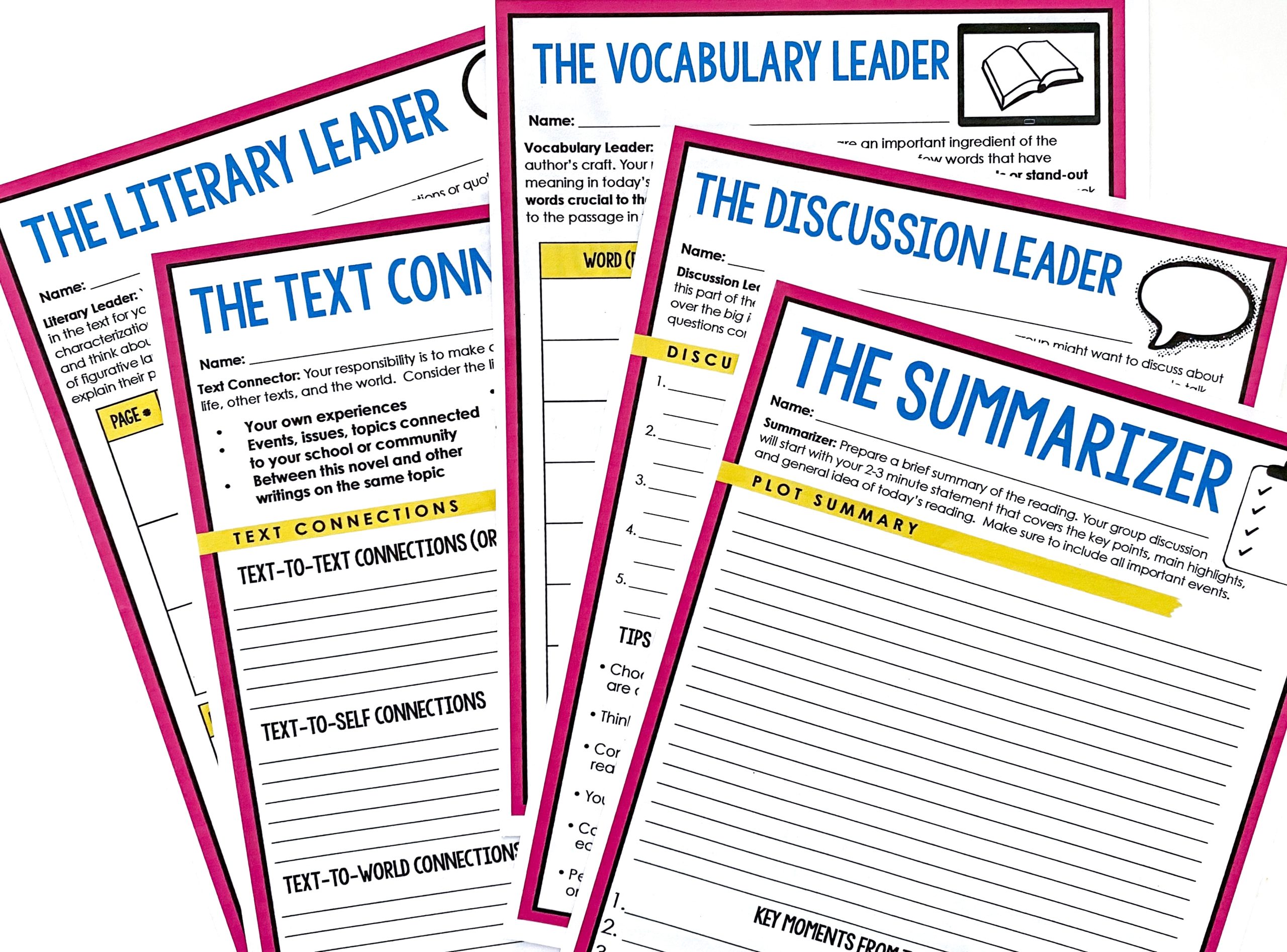
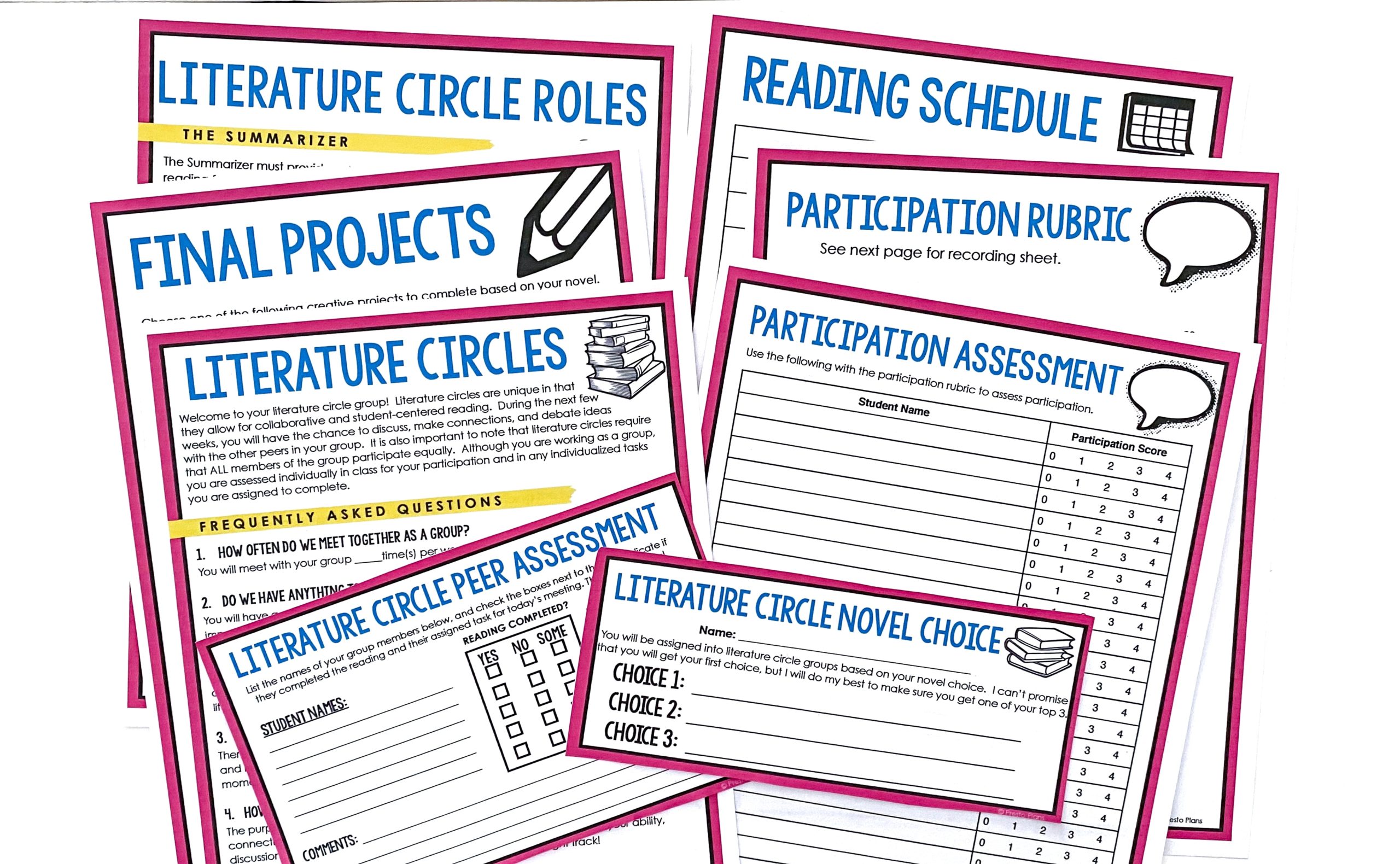
share this post